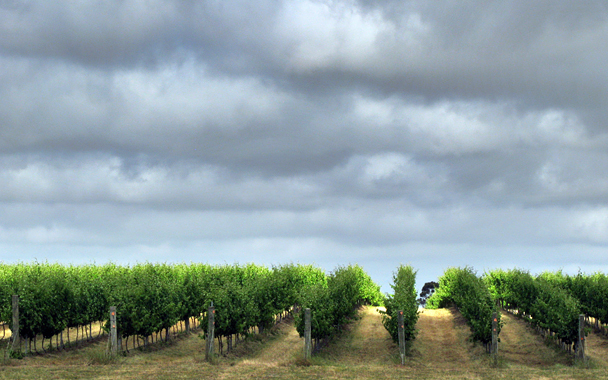Just 20 years ago, Albariño—the signature grape from the Rías Baixas region of Galicia—was rarely seen or even heard of outside Spain. Since the 1990s, however, the number of wineries in this cool, verdant northwest corner of the country has more than tripled, and Albariño’s popularity has earned it a place alongside Chardonnay, Sauvignon Blanc, and Riesling at wine bars across the world.
The grape’s growing popularity (not to mention its delicious flavor, a cross between fresh almonds and peach blossoms) has inspired winemakers worldwide to try their hand at it. In California, vintners in areas as expensive as Napa have given over acreage for its cultivation. The deepest investment in the varietal may be in Australia, where about four dozen wineries have planted the grape in recent years. But, it turns out, what they are growing isn’t Albariño at all.
It’s actually pretty easy to confuse grape varieties. Until DNA profiling came along in the early 1990s, people relied mostly on their eyes and taste buds—which is particularly difficult when comparing grapes grown in different parts of the world, where they can develop different characteristics. Think, for example, of the lean, hard Malbecs of Cahors in southwestern France and Argentina’s plush beauties.
So when Australia’s Commonwealth Scientific and Research Organization (CSIRO) brought in cuttings labeled “Albariño” from the Spanish National Grapevine Collection to add to its own nursery in 1989, no one questioned it. Until late 2008, when Jean-Michel Boursiquot, a French ampelographer (that is, a botanist who specializes in grapevines), was poking around in Australian vineyards and said, “Hey, this isn’t Albariño.” Australian authorities immediately performed DNA testing and confirmed Boursiquot’s hunch: What they had believed to be Albariño for the past two decades is actually Savagnin, an obscure variety from France’s Jura region.
Total chaos has since ensued, as the Australian government has demanded that all producers stop labeling their wines “Albariño” by the 2009 vintage (that’s right now in the Southern Hemisphere; the grapes have already been picked) unless they can prove through DNA analysis that the vines are, in fact, Albariño. So far, no one has proved his or her vines to be the real thing.
Since most people aren’t familiar with Savagnin, Australian producers are not eager to use it on their labels, regardless of the fact that it’s responsible for some of the best wines in the world. They could also call it Traminer, which is genetically identical to Savagnin. But the Australians use this less-perfumed cousin of Gewürztraminer to make off-dry whites, and no one, understandably, wants to have their dry wine formerly known as Albariño confused with old-style, semisweet Traminer.
There are other options: Savagnin is called Klevner or Klevener de Heiligenstein in Alsace, Gringet in the Savoie, and Païen or Heida in Switzerland. But this isn’t helpful to people like Damien Tscharke, who is credited with starting the fashion for Albariño in Australia. He’s afraid that without the fashionable varietal on the label, no one will buy his popular Girl Talk wine. "It's the largest volume wine we make, we have several hectares under cultivation, and I'm facing significant financial losses potentially,” he told the Sydney Morning Herald last month. Ross Brown, the chief executive of Brown Brothers winery in Victoria, went further: "If we had to relabel Albariño as Traminer or Savagnin Blanc, I doubt we'd persist with it. It's a shame, but sheer quality isn't the only thing that matters.”
Brown, for better or worse, may be right—labels sell wine, and Albariño has cachet. Yet Australia has proved able to popularize the most unlikely things—Verdelho, for example, an obscure Portuguese grape they use for crisp, juicy summer whites, or Uggs, the clunky, shapeless boots that inexplicably jumped from Bondi Beach to the fashion magazines several seasons ago and remain puzzlingly popular. Given Australian makers’ flair for outlandish labels and wacky names (from Ten Minutes By Tractor to Suckfizzle Augusta), why not just run with Savagnin? There are only so many acres in Château-Chalon; the world could use more lovely, nutty, salty vin jaune–like wine. Or, better yet, they can come up with a name of their very own, a wine we’ll want just as much as we want that Albariño. After all, given the mad tangle of grape genetics, the Spanish stuff we’ve all come to love could yet prove to be in part Savagnin.



 Pinterest
Pinterest


